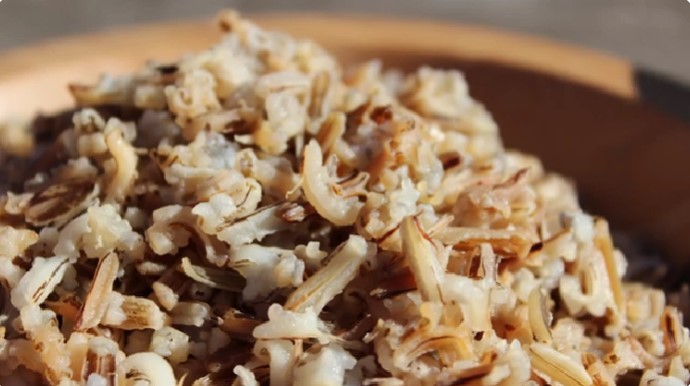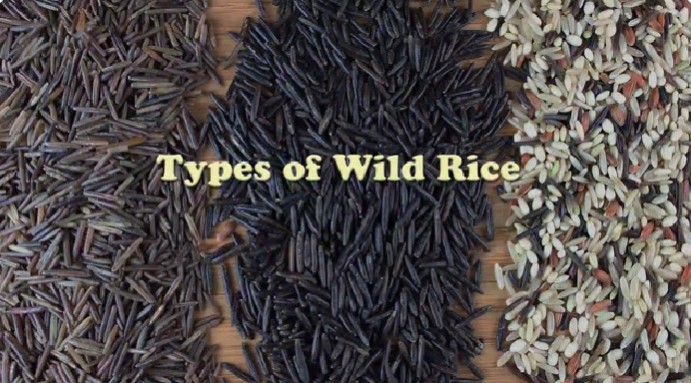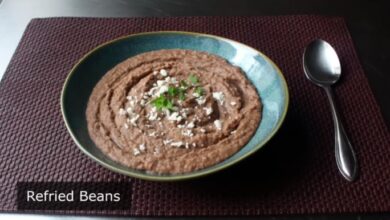Wild Rice Nutrition Facts
Wild rice, known for its rich, nutty flavor and chewy texture, is not only a culinary delight but also a powerhouse of nutrition. This unique grain, which is actually a type of grass, offers a wealth of health benefits that make it a valuable addition to any diet. Whether you’re seeking to boost your protein intake, enhance your fiber consumption, or simply explore new and nutritious food options, wild rice is worth considering.

Nutritional Profile of Wild Rice
Macronutrients
Wild rice is relatively low in calories and fat, making it an excellent choice for those looking to manage their weight. Here’s a breakdown of the macronutrient content per cooked cup (about 164 grams):
- Calories: 166
- Protein: 6.5 grams
- Carbohydrates: 35 grams
- Fat: 0.6 grams
- Fiber: 3 grams
Vitamins and Minerals
Wild rice is rich in several essential vitamins and minerals, contributing to its status as a highly nutritious food. Key nutrients include:
- Folate (Vitamin B9): 24% of the recommended daily intake
- Magnesium: 13% of the daily value (DV)
- Phosphorus: 17% DV
- Zinc: 9% DV
- Vitamin B6: 7% DV
- Iron: 5% DV
- Copper: 10% DV
Antioxidants
Wild rice is loaded with antioxidants, which are compounds that help protect your cells from damage caused by free radicals. The dark color of wild rice indicates a high content of antioxidants, such as apigenin, which has been shown to have anti-cancer properties.
Health Benefits of Wild Rice
Rich in Protein
Wild rice is an excellent source of plant-based protein, providing about 6 grams per cooked cup. This makes it a valuable addition to vegetarian and vegan diets. The protein in wild rice contains all essential amino acids, supporting muscle repair, enzyme production, and overall bodily functions.
High in Fiber
With 3 grams of dietary fiber per cooked cup, wild rice helps support digestive health, regulate blood sugar levels, and lower cholesterol. Including fiber-rich foods like wild rice in your diet can also promote a feeling of fullness, aiding in weight management.
Supports Heart Health
The fiber, protein, and antioxidant content of wild rice contribute to heart health by reducing cholesterol levels, improving blood pressure, and decreasing inflammation. Additionally, wild rice is naturally gluten-free, making it a safe and nutritious option for those with celiac disease or gluten sensitivity.
Antioxidant Powerhouse
Wild rice’s antioxidants, such as apigenin, play a crucial role in reducing oxidative stress and inflammation, potentially lowering the risk of chronic diseases like cancer and heart disease.
Nutrient-Dense
Wild rice is a good source of essential vitamins and minerals, particularly folate, magnesium, and phosphorus. Folate is vital for cell growth and development, making wild rice especially beneficial for pregnant women.
Cooking and Using Wild Rice
Cooking Instructions
Cooking wild rice is straightforward, though it takes longer than white or brown rice. Here’s a simple method:
- Rinse one cup of wild rice under cold water.
- Combine the rice with three cups of water or broth in a saucepan.
- Bring to a boil, then reduce heat, cover, and simmer for 45-60 minutes.
- Drain any excess liquid and fluff the rice with a fork before serving.
Culinary Uses
Wild rice can be used in various dishes, from salads and soups to casseroles and side dishes. Its nutty flavor and chewy texture complement a range of ingredients, making it a versatile addition to many recipes.
Storage Tips
Uncooked wild rice can be stored in an airtight container in a cool, dry place for up to a year. Cooked wild rice should be refrigerated and consumed within a week, or it can be frozen for up to six months.

Frequently Asked Questions
What are the main health benefits of wild rice?
Wild rice is rich in protein, fiber, antioxidants, and essential vitamins and minerals. These nutrients support heart health, digestive health, and overall well-being.
Is wild rice gluten-free?
Yes, wild rice is naturally gluten-free, making it a safe choice for individuals with celiac disease or gluten sensitivity.
How should wild rice be stored?
Uncooked wild rice should be kept in an airtight container in a cool, dry place. Cooked wild rice can be refrigerated for up to a week or frozen for up to six months.
Can wild rice be used as a substitute for other grains?
Absolutely! Wild rice can be substituted for white or brown rice in most recipes, adding a unique flavor and nutritional boost to your meals.
Incorporating wild rice into your diet can offer numerous health benefits and add variety to your meals. Whether you enjoy it as a side dish or as part of a main course, wild rice is a nutritious and delicious choice.





